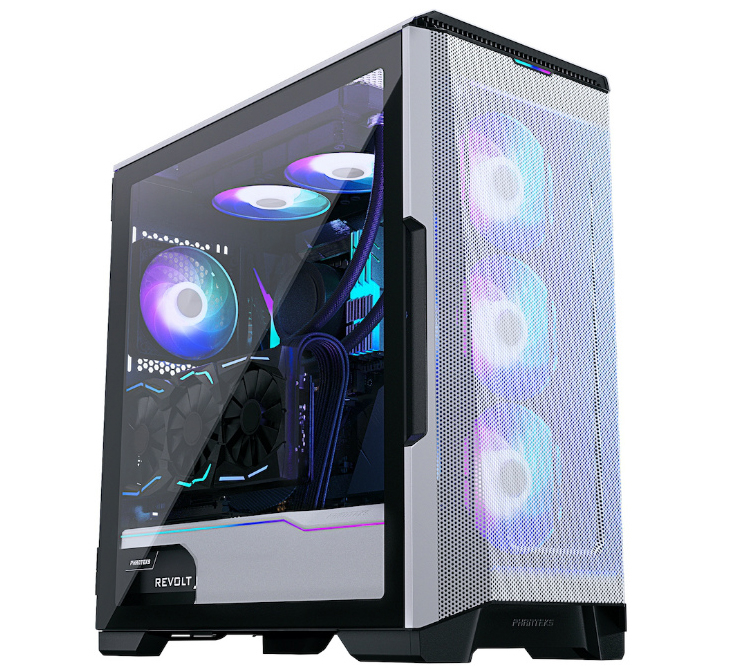
This would be more helpful on a case with a removable filter that needed to be cleaned, but it’s still appreciated since the majority of our testing required removing and replacing the front panel.
#PHANTEKS QUBE FREE#
All of this is fully contained within the chassis and leaves the front panel free to pop off very conveniently. Again, we’ll save most coverage of the non-RGB P400A for another piece, but we can reveal that the LED and non-LED fans are identical in form and close enough in RPM to be considered within manufacturing variance.įront panel items other than LED or fan controls include two USB 3.0 ports, audio in, audio out, and power/reset buttons. The P400A accepts control via a 5V D-RGB motherboard header, as opposed to the 12V RGB header found in the older P400S. The RGB controller in the $90 model controls the LEDs of the three 120mm front fans and the power button, and has external mode and color controls on the front panel.

Some modification and creative cable routing might allow for even wider boards. The lack of a cable management bar does mean the P400A can fit E-ATX boards, since the motherboard tray is flat all the way to the front of the case-Phanteks only claims support for boards up to 272mm wide, but that’s due to a lack of mounting holes at the front of the case and conflict with the optional HDD mounts.

Whether the P400A’s approach of a decent amount of clearance across the whole motherboard tray with some built-in velcro straps or the Meshify C’s approach (for example) of a narrow but deeper cable management space is a matter of user preference. There’s approximately 2.5cm between the motherboard tray and the steel side panel. We’re going to call it the P400A RGB instead. The P400A RGB technically has ARGB LEDs on the fans and power button and is technically called the P400A_D (for digital) or super-duper-extra-technically the PH-EC400ATG_DBK (black) and PH-EC400ATG_DWT (white).
#PHANTEKS QUBE PC#
The RGB model costs a bit more than the non-RGB option and empty mounts for HDD bays are sold separately, but at this point, this is no longer an unusual way to market PC cases and Stockholm syndrome has started to set in. The P400 is an extremely basic case, of a type that has only gotten more common since we reviewed it the first time more than three years ago.
#PHANTEKS QUBE FULL#
We’ll be covering the $70 model in a separate piece, since this review is already full to the brim with testing of the P400A’s front panel. Phanteks has gotten an impressive amount of use out of that tooling over the years, most recently with the case we’re reviewing today: the mesh-fronted P400A that comes as a $70 base model with two fans and a fan controller or a $90 RGB model with three fans and an LED controller. The P400 is a case that launched during the initial explosion of S340-esque cases with sealed front panels, full-length PSU shrouds, and no optical drive support. The original Phanteks Eclipse P400 released circa 2016. In today’s testing, we’ll look at the Phanteks P400A RGB for thermals and acoustics, but we’ll also test the white panel versus black panel to see if the paint thickness matters, then throw the original P400 panel on for comparison.


Phanteks also avoids the trap that many fall into by eliminating a dust filter, instead relying on the fine mesh as a filter and keeping airflow as open as possible. The P400A follows-up on the original Eclipse P400, but while keeping the base tooling, it massively overhauls the panel design to move away from a closed-off, suffocated front and toward a more open mesh. The Phanteks P400A gave us tentative hope at Computex when we saw its move to a fine mesh front panel, similar to what Cooler Master did with the NR600.


 0 kommentar(er)
0 kommentar(er)
